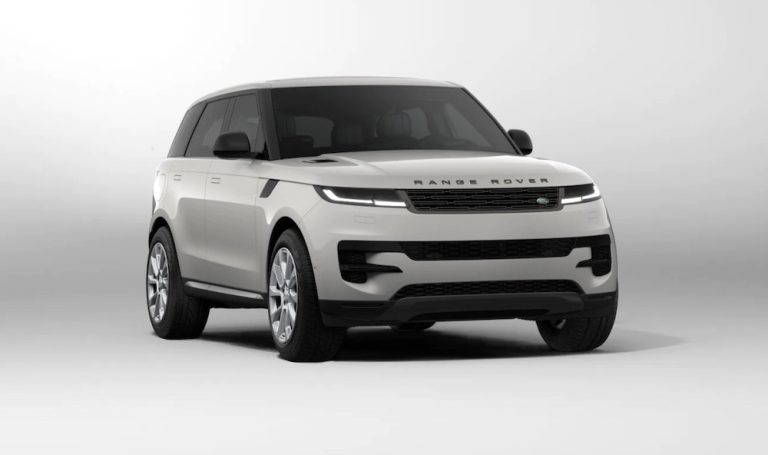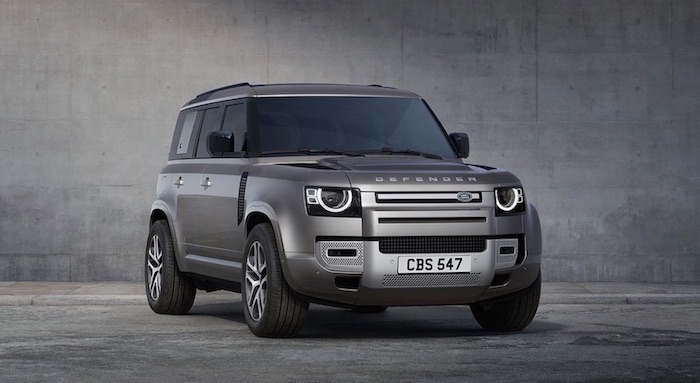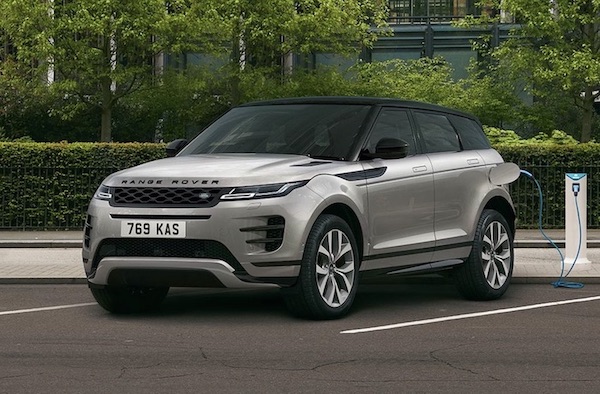Electric Cars: The Basics
For those of you new to zero-emission electric driving, we recommend a read of the following articles:
For those keen on an overview of the Indian electric vehicle (EV) market and the different types of electric vehicles (EVs), simply scroll down to the end of the article!
Sign up to the newsletter
The Range Rover PHEV SUV
Land Rover is an iconic British brand, famed globally for its off-road and four-wheel drive vehicles. Land Rover is owned by Jaguar Land Rover (JLR) Automotive PLC, a leading luxury vehicle manufacturer with a distinctive reputation of being British and iconic. However the automotive company is now owned by the leading Indian industrial conglomerate, the Tata Group. The portfolio of Range Rover electric vehicles (EVs) include:
- Range Rover Evoque PHEV SUV
- Range Rover Velar PHEV SUV
- Range Rover Sport PHEV SUV
- Range Rover PHEV SUV
The famed Land Rover Range Rover (simply known as Range Rover) is currently in its fifth generation. This iconic 4×4 SUV was launched in 1970 by British Leyland. The fifth generation luxurious SUV was revealed in London in October 2021. The SUV is now also available as a mild hybrid electric vehicle (MHEV) and a plug-in electric vehicle (PHEV). The pure electric Range Rover SUV is expected to be available from 2024.
The all new Range Rover plug-in hybrid SUV is certainly re-defining the landscape of plug-in hybrid electric vehicles, in particular, for the premium SUV segment. The latest generation of the Range Rover PHEV SUV incorporates a 38.2 kWh onboard EV battery, substantially larger than the average PHEV battery size (10 kWh to 20 kWh).
This increased EV battery capacity is a game changer, as it enables the plug-in hybrid vehicle to truly leverage the benefits of electric driving i.e. to reduce driving costs and tailpipe emissions when driven on e-mode.
Driving a PHEV on e-mode is always cheaper than using the internal combustion engine (ICE). However, due to the limited electric range of the previous generation Range Rover PHEV, electric driving had not been leveraged to its maximum.
However, with the new Range Rover PHEV this is all set to change. The electric vehicle (EV) has a claimed EV range up to 113 km (WLTP). Even accounting for all the factors that impact the pure electric range, the PHEV will be capable of delivering well over 90 km. This distance covers a significant portion of commutes, to include urban driving, but also a fair amount of motorway driving.
Land Rover claims a fuel economy up to 0.8 l/100km for the PHEV. To achieve anything close to the claimed fuel economy, the e-mode on the PHEV will need to be leveraged on a very regular basis. If the EV is driven primarily using the petrol combustion engine, the fuel economy is certainly not going to get anywhere close to the manufacturer claimed figure. Like, the real-world EV range, expect the real-world fuel economy to be impacted by a number of factors and lower than the manufacturer claimed economy.
To leverage the benefits of electric driving, having a fully charged EV battery is imperative. The Range Rover PHEV can be charged up to 50 kW DC charging: 0-80%: 40 minutes. Do keep in mind that not all plug-in electric cars are capable of DC rapid charging.
For longer journeys, best to plan the trip, such that the rest/coffee breaks coincide with the need to top up the EV battery. This way for longer motorway commutes, the cost of driving remains lower compared to using the combustion engine.
In all probability, on most occasions, the EV will be charged overnight at home. We at e-zoomed recommend the use of a dedicated EV charger for home charging. The easee EV charger is a good example. The PHEV can be charged up to 100% in 5 hours via a dedicated EV charger. We at e-zoomed do not encourage the use of a 3-PIN domestic socket to charge an electric car. Charging the plug-in hybrid using a domestic plug will take up to 15 hours.
We recommend a ‘topping up’ approach to EV charging. This way, the e-mode can be used more often and regular charging is also better for the long-term maintenance of the EV battery. Land Rover offers a warranty up to 6 years or 100,000 km.
The all-wheel drive Land Rover P400e PHEV pairs a 3.0-litre (6 cylinder) petrol combustion engine with an electric motor (105 kW). Despite the size and weight of the EV (2,770 kg), acceleration is impressive: 0-100 km/h in 5.7 seconds and a 225 km/h top speed (maximum power: 440 HP/ torque: 620 Nm). The P510e AWD PHEV can achieve 0-100 km/h in 5.2 seconds and has a 240 km/h top speed.
The electric vehicle is available in both the standard and long wheelbase. The long wheelbase offers up to 7 seats. The PHEV is suitable for large families given the interior space and boot space of the EV. Land Rover claims the PHEV has tailpipe emissions as low as 18g (CO2/km).
Bottom-line, electric driving is good for the environment and the wallet! The Range Rover plug-in hybrid is available in India.
| PROS | CONS |
|---|---|
| One of the most luxurious PHEVs on the market | Expensive, specially at the higher trim levels |
| Good EV battery size and zero emission electric range | Onboard charger limited to 7 kW |
| Efficient electric vehicle with good fuel economy | DC charging limited to 50 kW |
The Range Rover Plug-In Hybrid SUV (credit:JLR)
| At A Glance | |
|---|---|
| EV Type: | Plug-In Hybrid Electric Vehicle (PHEV) |
| Vehicle Type: | SUV |
| Engine: | Electric/ Petrol |
| Available In India: | Yes |
| Trims (2 Options) |
|---|
| Range Rover Standard Wheelbase (from Rs 2.61 Crs) |
| Range Rover Long Wheelbase (from Rs 3.58 Crs) |
| EV Battery & Emissions | |
|---|---|
| EV Battery Type: | Lithium-ion |
| EV Battery Capacity: | Available in one battery size: 38.2 kWh |
| Charging: | 50 kW DC charging: 0%-80%: 40 minutes. Onboard charger: 7 kW AC (0%-100%: 5 hrs) |
| Charge Port: | Type 2 |
| EV Cable Type: | Type 2 |
| Tailpipe Emissions: | 18 – 21g (CO2/km) |
| Battery Warranty: | 6 years or 100,000 km |
| Charging Times (Overview) | |
|---|---|
| Slow charging AC (3 kW – 3.6 kW): | 6 – 12 hours (dependent on size of EV battery & SOC) |
| Fast charging AC (7 kW – 22 kW): | 3 – 8 hours (dependent on size of EV battery & SoC) |
| Rapid charging AC (43 kW): | 0-80%: 20 mins to 60 mins (dependent on size of EV battery & SoC) |
| Rapid charging DC (50 kW+): | 0-80%: 20 mins to 60 mins (dependent on size of EV battery & SoC) |
| Ultra rapid charging DC (150 kW+): | 0-80% : 20 mins to 40 mins (dependent on size of EV battery & SoC) |
| Tesla Supercharger (120 kW – 250 kW): | 0-80%: up to 25 mins (dependent on size of EV battery & SoC) |
- Note 1: SoC: state of charge
| Dimensions | |
|---|---|
| Height (mm): | 1870 |
| Width (mm): | 2209 |
| Length (mm): | 5052 |
| Wheelbase (mm): | 2997 |
| Turning Circle (m): | 10.95 |
| Boot Space (L): | 818 |
| P400e PHEV | |
|---|---|
| EV Battery Capacity: | 38.2 kWh |
| Pure Electric Range (WLTP): | 113 km |
| Electric Energy Consumption (Wh/km): | 287.6 |
| Fuel Consumption (l/100km): | 0.8 – 0.9 |
| Charging: | 50 kW DC charging: 0%-80%: 40 minutes. Onboard charger: 7 kW AC (0%-100%: 5 hrs) |
| Top Speed: | 225 km/h |
| 0-100 km/h: | 5.7 seconds |
| Drive: | All-wheel drive (AWD) |
| Electric Motor (kW): | 105 |
| Max Power (HP): | 440 |
| Torque (Nm): | 620 |
| Transmission: | Automatic |
| Seats: | Up to 7 (long wheel base) |
| Doors: | 5 |
| Unladen Weight-EU (kg): | 2,770 |
| Colours: | 12 |
| NCAP Safety Rating: | N/A |
| P510e PHEV | |
|---|---|
| EV Battery Capacity: | 38.2 kWh |
| Pure Electric Range (WLTP): | 113 km |
| Electric Energy Consumption (Wh/km): | 287.6 |
| Fuel Consumption (l/100km): | 0.8 – 0.9 |
| Charging: | 50 kW DC charging: 0%-80%: 40 minutes. Onboard charger: 7 kW AC (0%-100%: 5 hrs) |
| Top Speed: | 240 km/h |
| 0-100 km/h: | 5.2 seconds |
| Drive: | All-wheel drive (AWD) |
| Electric Motor (kW): | 105 |
| Max Power (HP): | 510 |
| Torque (Nm): | 700 |
| Transmission: | Automatic |
| Seats: | Up to 7 (long wheel base) |
| Doors: | 5 |
| Unladen Weight-EU (kg): | 2,810 |
| Colours: | 12 |
| NCAP Safety Rating: | N/A |
India Electric Vehicle (EV) Market
India, like many other countries, is well positioned to benefit from the shift to zero-tailpipe emission electric driving. Road transportation is a major contributor to air pollution (over 30%), choking our towns, cities and villages across India.
Diesel vehicles, in particular, diesel trucks and diesel buses, are significant sources for tailpipe emissions. But given the rise in the standard of living, since liberalisation, the demand for privately owned passenger cars has increased at an unprecedented pace, further worsening the air quality. India has more than 3 crores (30 million) cars releasing tailpipe emissions on its roads!
Though we have seen some improvements in air quality during the ongoing pandemic (as a result of lower vehicle traffic), India’s shift to electric driving will be key in achieving long-term higher air quality. Of course, apart from EVs, the continued development of green and renewable energy infrastructure will be key in achieving lower long-term air pollution. India has already demonstrated global leadership in regards to large-scale solar and wind projects! Hopefully, India will replicate the success with zero-emission electric vehicles.
Despite recent announcements and support from local and national government agencies in India, the EV market is still at a nascent stage, well, at least in terms of electric cars and electric vans. Two-wheel electric scooters and three-wheel electric rickshaws (e-rickshaws) have demonstrated a strong uptake, and India is poised to become a global leader in electric scooters and electric rickshaws (e-tuk).
In fact, the ubiquitous e-rickshaw commands an impressive 83% of the Indian electric vehicle market. India currently has over 15 lakhs (1.5 million) e-rickshaws, with each EV playing a role in reducing tailpipe emissions on our roads in India.
Sales of passenger electric cars is still at an early stage. In FY2021, though the market witnessed a growth of nearly 110% from the previous year, the absolute volume of cars sold was only 5,905 electric cars. Currently there are less that 15 pure electric car models available on sale in India.
Tata Motors, the biggest automotive manufacturer in India has launched the Tata Nexon electric SUV. Mahindra Electric, another leading Indian automotive manufacturer, has also launched a number of plug-in electric vehicles (EVs), to include, the Mahindra eVerito electric car, Mahindra eSupro electric van and Mahindra e2o Plus compact electric car.
International manufacturers, like UK based MG Motors, have also launched the MG ZS electric SUV in India. Also available are the all-electric Jaguar I-PACE SUV and the Hyundai Kona electric SUV.
Types Of Electric Vehicles (EVs)
“Electric vehicle” is an umbrella term, and a broad one at that. There are a number of different types of electric vehicles (EVs), each with its distinct characteristics and advantages. These include:
- BEVs: Battery-electric vehicles (pure electric)
- PHEVs: Plug-in hybrid electric vehicles (electric and internal combustion engine (ICE) combined)
- MHEVs: Mild hybrid electric vehicles (internal combustion engine (gasoline or diesel) along with regenerative braking)
- FCEVs: Fuel cell electric vehicle (electric with hydrogen as fuel)
The above “types” are powered either entirely or partially by electric energy and have different environmental impacts.
Battery-Electric Vehicles (BEVs)
Battery-electric vehicles (BEVs), also known as pure electric vehicles, are powered entirely by electricity (i.e. the vehicle does not have a conventional internal combustion engine). BEVs have zero-tailpipe emissions and help improve local air quality.
BEVs are also very economical to drive. A BEV can cost as little as Rs 50 per 100 kilometres to drive. Examples of best-selling EVs include, the all-electric Tesla Model 3 and the all-electric Renault Zoe. A BEV is charged by plugging in the electric vehicle to a dedicated electric car charging station (home or public charging stations). BEVs are well suited for those living in towns, cities and urban centres. Of course, battery-electric vehicles are also suitable for those living in rural settings.
Plug-In Hybrid Electric Vehicles (PHEVs)
Plug-in hybrid electric vehicles (PHEVs) differ from battery-electric vehicles (BEVs), in that, PHEVs use both a conventional internal combustion engine (ICE) and an electric engine for propulsion. Plug-in hybrid vehicles combine the advantages of electric driving and internal combustion engine driving.
On shorter distances, the PHEV uses the electric mode to drive emission-free, using the on-board EV battery and regenerative braking. For longer distances, the plug-in hybrid electric vehicles switches to using the internal combustion engine.
With a PHEV, the vehicle can cost as little Rs 50 per 100 kilometres to drive on e-mode, without any tailpipe pollution, and also be driven long-distances, without the fear of range anxiety! Most PHEVs have an EV battery of up to 15 kWh and can achieve a zero-emission electric range of up to 50 kilometres. No wonder PHEVs are fast becoming popular globally, with much potential or India.
Like a BEV, the plug-in hybrid electric vehicle is charged by using an external power source (EV charging point) for charging.
PHEVs are suitable for those that drive long-distances on a regular basis but want to lower the negative environmental impact from tailpipe pollution. PHEVs are also suitable for those individuals and families that are seeking to save money by taking advantage of electric driving. The Volvo XC40 PHEV and the Volkswagen Golf 8 are good examples of PHEVs.
Mild Hybrid Electric Vehicles (MHEVs)
Mild hybrid electric vehicles (MHEVs) are a limited form of electric driving. These vehicles also use hybrid technologies (electric driving and internal combustion engine), but the EV battery is much smaller than a BEV or PHEV. Moreover, in a mild hybrid, the EV battery cannot be charged via an external source (i.e. EV charging station).
In a MHEV, the battery is charged by capturing the energy released during braking, a process known as regenerative braking. MHEVs have lower tailpipe emissions, and are more economical to own, run and maintain than petrol and diesel cars. MHEVs are a better option than a petrol or diesel car, but not as good an option as a BEV or PHEV. Mild hybrids are well suited for those living in regions with limited charging infrastructure. Again, MHEVs have great potential in India, given the limited public EV charging infrastructure.
The Toyota Prius is a good example of a mild hybrid electric vehicle.
Fuel Cell Electric Vehicles (FCEVs)
Fuel Cell Electric Vehicles (FCEVs) also called hydrogen fuel cell vehicles, have a fuel cell stack that uses hydrogen to generate the electricity needed to power the electric vehicle. The fuel cell generates electricity and pure water vapour that can escape via the tailpipe. It is capable of generating electricity as long as there is a steady supply of hydrogen. Fuel cell electric vehicles can be refuelled with hydrogen at purpose built filling stations. Filling an FEC takes no more than five minutes.
FCEVs have a range of about 500 kilometers or more between refueling. Today, the only and major limitation is the very limited hydrogen refuelling station network globally. The Toyota Mirai FCEV is a good example of this type of EV.
While e-zoomed uses reasonable efforts to provide accurate and up-to-date information, some of the information provided is gathered from third parties and has not been independently verified by e-zoomed. While the information from the third party sources is believed to be reliable, no warranty, express or implied, is made by e-zoomed regarding the accuracy, adequacy, completeness, legality, reliability or usefulness of any information. This disclaimer applies to both isolated and aggregate uses of this information.

































